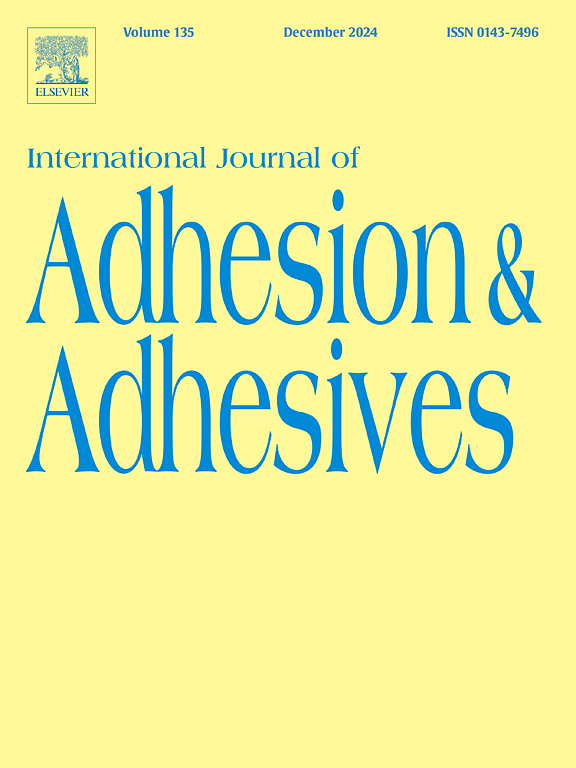Chemistry and mechanisms of water absorption properties of bioadhesives: A review
IF 3.5
3区 材料科学
Q2 ENGINEERING, CHEMICAL
International Journal of Adhesion and Adhesives
Pub Date : 2025-07-16
DOI:10.1016/j.ijadhadh.2025.104105
引用次数: 0
Abstract
Natural materials-based bioadhesives offer reliable and sustainable substitutes for synthetic adhesives due to their biocompatibility and sustainability. Water absorption properties in bioadhesives play a crucial role in determining their performance, particularly in biomedical, dental, and wood applications. The present review focuses on the chemistry and mechanisms beneath water absorption in bioadhesives, emphasizing the significant factors that impact this characteristic, including polymer structure, hydrophilic functional groups, cross-linked networks, and crystallinity. Water adsorption is also highly impacted by the presence of fillers and additives, as well as by environmental factors including pH, humidity, and temperature. In our study we explore how molecular weight, cross-linking density, and hydrophilic and hydrophobic functional groups affect the adhesive properties. Furthermore, the mechanisms of water-bioadhesive interaction, such as capillary action, diffusion, and swelling, are described. Through comprehension of the complex connection between polymer composition and water interaction, this review offers valuable perspectives for enhancing the functionality and design of bioadhesives for a range of uses. Additionally, the review addresses the challenges posed by high water absorption in carbohydrate- and protein-based adhesives, proposing strategies for enhancing their water resistance to expand their use in fields like wood bonding and biomedical applications.
生物胶粘剂的化学性质及吸水机理研究进展
基于天然材料的生物胶粘剂由于其生物相容性和可持续性,为合成胶粘剂提供了可靠和可持续的替代品。生物胶粘剂的吸水性能在决定其性能方面起着至关重要的作用,特别是在生物医学、牙科和木材应用方面。本文综述了生物胶粘剂的化学性质和吸水机理,强调了影响生物胶粘剂吸水特性的重要因素,包括聚合物结构、亲水性官能团、交联网络和结晶度。填料和添加剂的存在以及pH、湿度和温度等环境因素也会对水的吸附产生很大影响。在我们的研究中,我们探讨了分子量、交联密度、亲疏水官能团对胶粘剂性能的影响。此外,还描述了水-生物胶粘剂相互作用的机制,如毛细管作用、扩散和膨胀。通过对聚合物组成与水相互作用之间的复杂联系的理解,本文综述为增强生物胶粘剂的功能和设计提供了有价值的观点。此外,该综述解决了碳水化合物和蛋白质基粘合剂中高吸水率带来的挑战,提出了增强其耐水性的策略,以扩大其在木材粘合和生物医学应用等领域的应用。
本文章由计算机程序翻译,如有差异,请以英文原文为准。
求助全文
约1分钟内获得全文
求助全文
来源期刊

International Journal of Adhesion and Adhesives
工程技术-材料科学:综合
CiteScore
6.90
自引率
8.80%
发文量
200
审稿时长
8.3 months
期刊介绍:
The International Journal of Adhesion and Adhesives draws together the many aspects of the science and technology of adhesive materials, from fundamental research and development work to industrial applications. Subject areas covered include: interfacial interactions, surface chemistry, methods of testing, accumulation of test data on physical and mechanical properties, environmental effects, new adhesive materials, sealants, design of bonded joints, and manufacturing technology.
 求助内容:
求助内容: 应助结果提醒方式:
应助结果提醒方式:


